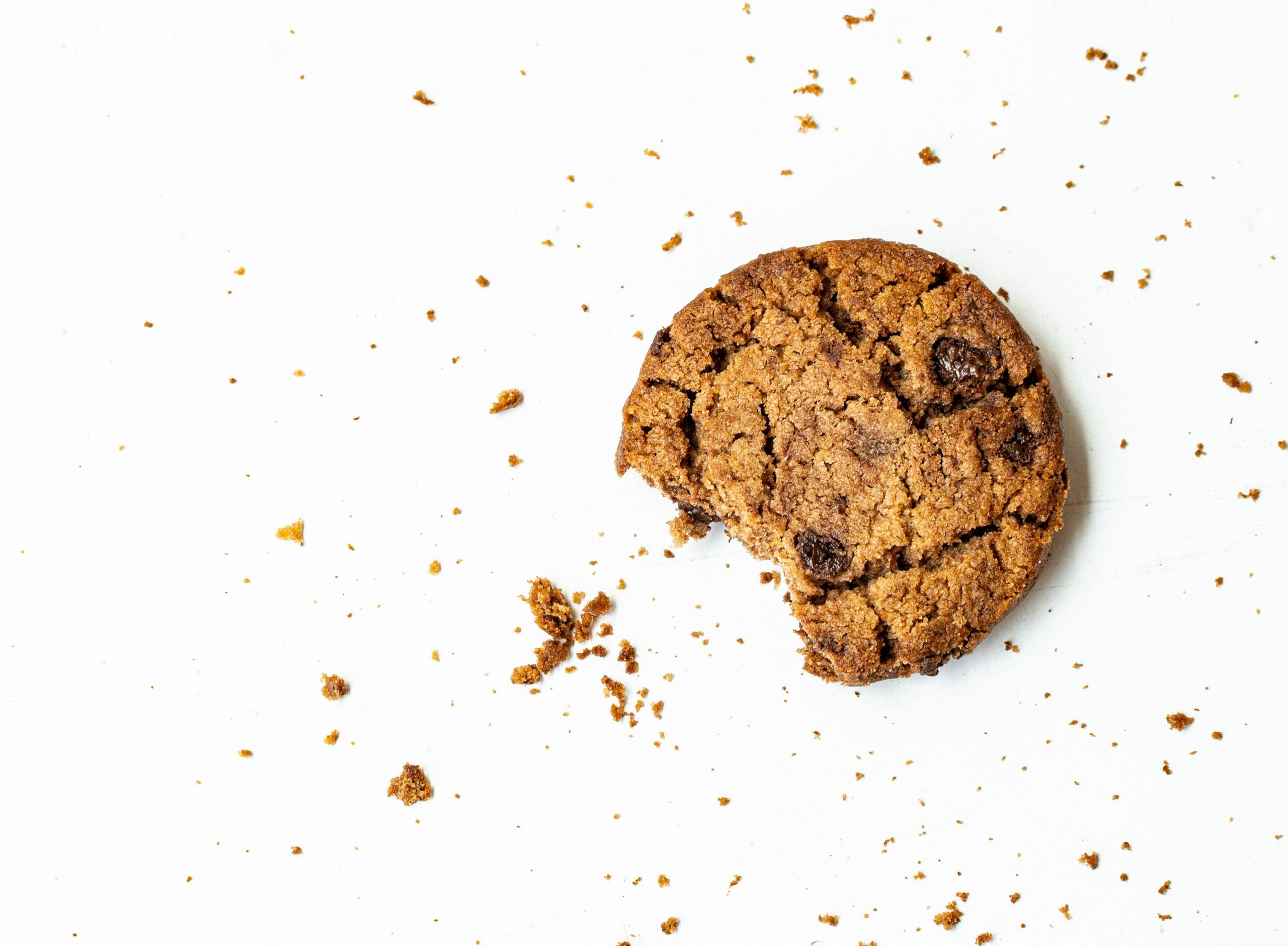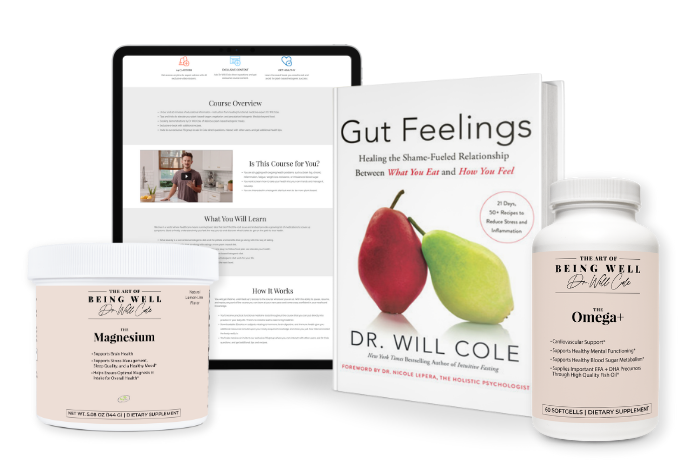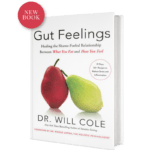The Top 6 Ingredients Hiding In Your “Healthy” Snack Foods

In my telehealth functional medicine clinic, I consult patients on a daily basis on using food as medicine - starting with educating people on the best products to buy at the grocery store.
Unfortunately, it’s not enough to take brands at face value when shopping. Although marketing is an amazing tool, many brands take advantage of that power and label products as “natural” or “healthy” when they are far from it.
That’s why it’s so important to educate yourself on ingredients and how to read labels. Since I believe knowledge is power, here is a deep dive into translating food labels and ingredients so you can make the best choices for yourself and your family with each purchase.
ARTICLE CONTINUES BELOW
Make Your Life a Cleanse
SUBSCRIBER-ONLY GUIDES FOR GUT HEALTH, VIBRANT ENERGY, HEALTHY FOOD & CLEAN ALCOHOL
Get FREE access to these + giveaways, recipes, & discount codes in personal emails from Dr. Will Cole.
Here’s What I Avoid
Everyone’s biochemistry is unique, however based on my years of clinical experience and research, these are the foods I recommend you avoid at all costs and what I personally avoid when shopping for my family.
1. Gluten
When it comes to food, there is no “one-size-fits all” rule. But in terms of gluten, the research is in. Studies have shown that you can still react to gluten even if you aren’t officially diagnosed with celiac disease as that is often the last stage of the gluten-sensitivity spectrum. (1) Even if you are ok with gluten specially, there are still 24 other aspects of wheat that could potentially bother you. The good news? There are more and more gluten-free snacks and substitutions coming out each day!
2. Preservatives
Ultimately, preservatives are just chemicals and other toxins that are added to our food to keep it fresh for longer. That doesn’t sound very natural to me! The fact is, our genetics have remained unchanged for thousands of years but we are continually exposed to more and more chemicals in modern society. And with the rise in autoimmune problems, it just goes to show that our bodies aren’t able to handle the onslaught of these preservatives and other additives.
3. Refined and artificial sugar
It’s no secret that sugar intake has been linked to diabetes, obesity, and other metabolic health problems. While there’s nothing wrong with occasionally having some sugar, the problem is the amount of sugar we eat on a daily basis far surpasses what our bodies can handle. That’s because most snacks are filled with unnecessary sugar - even “healthy” snacks, dressings, and other foods that are meant to be savory.
However, that doesn’t mean we should just switch to aspartame, sucralose, or other artificial sweeteners. In fact, researchers have shown that these can be worse for you in the end because they alter the composition of your microbiome, leading to metabolic health problems. (2) Instead, look for snacks that are made with monk fruit, stevia, xylitol, dates, honey, pure maple syrup, or organic coconut sugar.
4. Dairy
I’ll let you in on a little secret: I don’t believe dairy is bad. I do, however, have a problem with what we’ve done with dairy. Most of today’s dairy farms give cows an abundance of hormones and antibiotics, feed them corn instead of grass, and have them live in generally unhealthy conditions. Then, the cow’s milk is pasteurized and homogenized. To make up for nutrient loss, synthetic vitamins are added into the milk to try and stimulate what nature had already included in the whole-food version.
Because of all of these modifications, I’ve seen firsthand how conventional dairy can trigger a cascade of chronic inflammation and other dairy sensitivities. However, if you can handle dairy, I say go for it! Just be sure to choose brands that use organic, grass-fed dairy whenever possible.
5. Industrial seed oils
Almost every pre-packaged food item is made with either canola, vegetable, soybean, corn, or some other form of industrial seed oils. This is because they are made from government-subsidized crops, making them cheap and accessible to producers. But they are costly to your health since they are high in omega-6 polyunsaturated fats (PUFA).
While omega-6s aren’t inherently bad, too many omega-6s compared to omega-3s can result in chronic inflammation in the body. Also, these oils are highly processed with industrial solvents. Instead, choose snacks made with avocado oil and coconut oil.
6. Food dyes
In 1950 the intake of artificial food dyes was 12 milligrams a day. In 2012 that number rose to a whopping 68 milligrams a day. Studies have shown that just 50 milligrams a day have been linked to increased symptoms of ADHD. (3) I recommend looking out for the following dyes:
- FD&C Yellow No. 6: found in candy, cereal, and soft drinks
- FD&C Yellow No. 5: found in pickles, cereal, and granola bars
- D&C Yellow No. 1: found in frozen desserts and juices
- FD&C Red No. 40: found in soft drinks, candy, and children’s over-the-counter medications
- FD&C Blue No. 1 and No. 2: found in sports drinks, candy, and cereals
- FD&C Green No. 3: found in sports drinks, candy, cereals, and ice cream
Next Steps
Even though you can’t always avoid everything, the goal is to recognize every ingredient as something natural from the earth. You want your food to be food - not a chemistry project.
If you want to avoid these harmful substances and thrive using food as medicine, as one of the first functional medicine telehealth clinics in the world, we provide webcam health consultations for people around the globe.
Photo: unsplash.com
Start Your Health Journey Today
FUNCTIONAL MEDICINE CONSULTATIONS FOR PEOPLE AROUND THE WORLD
References:
- Sapone, Anna et al. “Spectrum of gluten-related disorders: consensus on new nomenclature and classification.” BMC medicine vol. 10 13. 7 Feb. 2012, doi:10.1186/1741-7015-10-13
- Abou-Donia, Mohamed B et al. “Splenda alters gut microflora and increases intestinal p-glycoprotein and cytochrome p-450 in male rats.” Journal of toxicology and environmental health. Part A vol. 71,21 (2008): 1415-29. doi:10.1080/15287390802328630
- Stevens, Laura J et al. “Amounts of artificial food colors in commonly consumed beverages and potential behavioral implications for consumption in children.” Clinical pediatrics vol. 53,2 (2014): 133-40. doi:10.1177/0009922813502849
View More At Our Store
Purchase personally curated supplements
and Dr. Will Cole’s books!

The information on this website has not been evaluated by the Food & Drug Administration or any other medical body. We do not aim to diagnose, treat, cure or prevent any illness or disease. Information is shared for educational purposes only. You must consult your doctor before acting on any content on this website, especially if you are pregnant, nursing, taking medication, or have a medical condition.
Our content may include products that have been independently chosen and recommended by Dr. Will Cole and our editors. If you purchase something mentioned in this article, we may earn a small commission.

BY DR. WILL COLE
Dr. Will Cole, DNM, IFMCP, DC is a leading functional medicine expert who consults people around the globe, starting one of the first functional medicine telehealth centers in the world. Named one of the top 50 functional and integrative doctors in the nation, Dr. Will Cole provides a functional medicine approach for thyroid issues, autoimmune conditions, hormonal imbalances, digestive disorders, and brain problems. He is also the host of the popular The Art of Being Well podcast and the New York Times bestselling author of Intuitive Fasting, Ketotarian, Gut Feelings, and The Inflammation Spectrum.

Gut Feelings
Healing The Shame-Fueled Relationship
Between What You Eat And How You Feel
